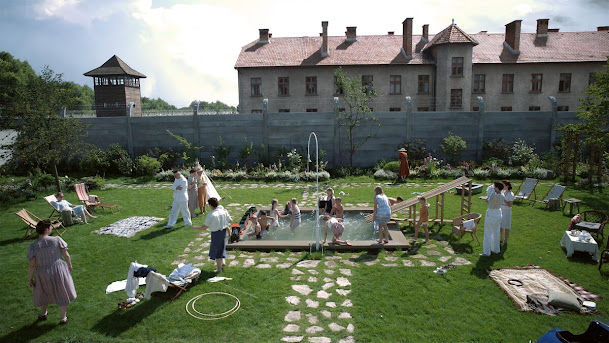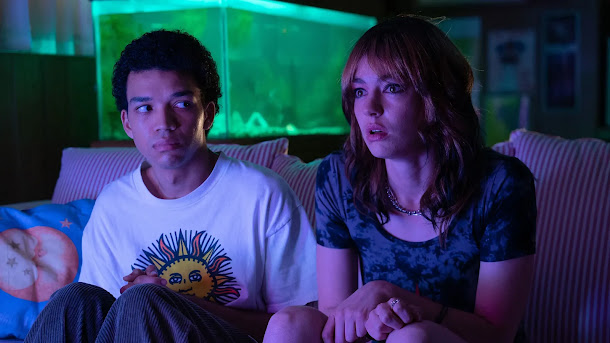"Weapons" review: "A" horror with "B" ideas
"Weapons," 2025, directed by Zach Cregger
★★½☆☆
In Ti West’s 2024 slasher “Maxxxine”, the titular character says that she wants to make a “‘B’ movie with ‘A’ ideas,” verbalizing the aspirations of many working and aspiring horror filmmakers in the contemporary era. Off the heels of an unexpected hit and on the road to a big-budget video game adaptation, former comedian Zach Cregger is a big name in the world of young new voices in horror. His 2022 film "Barbarian" was lauded for its unexpected twists and breakneck pace, as well as its similarities to more kitschy low-budget cult films of the past. “Weapons”, Cregger’s new film that he wrote and directed, unfortunately has none of the above. Contrary to West’s proverbial “‘B’ movie with ‘A’ ideas,” “Weapons” is the inverse in the worst way.
The opening moments of “Weapons”, also seen in many of the trailers, are captivating and haunting. In a semi-small town called Maybrook (a stand-in for Anywhere, USA,) a classroom of 17 children leave their houses of their own accord all on the same night at exactly the same time: 2:17 AM. The children run in a disturbing, robotic manner, extending their arms downward in stiff diagonals. This inciting incident is explained through clunky voiceover, but the imagery is nevertheless potent: Why these children? Why this specific time, which is highlighted in multiple closeups? What is in this town, metaphorically and literally, that could cause this? These questions have seemingly infinite possible answers, but the film opts to answer them in the most straightforward, banal ways; most of the answers are either a product of pure coincidence or a supernatural shrug. Cregger’s instinct to subvert recent genre trends of clumsily forcing horror concepts into vague thematic boxes like “trauma” and “grief” is admirable, but when he’s playing with so many intriguing concepts, a simple conclusion feels like a letdown.
The film is separated into distinct sections, each from a specific perspective from one of its core characters. The first focuses on the teacher of the missing children, Justine (Julia Garner), whose history of alcoholism and intense personality traits make her an easy target for the grieving parents’ anger. The second is built around one of said parents, Archer (Josh Brolin), a similarly acute character set on investigating the disappearances with or without the help of the police. Early in the film, Archer has a dream about his son leaving the house late at night, following him outside into a nearby forested area. When he emerges, he’s back at his house, where a colossal, ethereal AR-15–style rifle hangs in the sky above his roof. Soon after, he goes inside. Again he encounters his missing son and, in a creative jumpscare, is startled when the boy is replaced with a brightly lit woman in gaudy makeup. This scene is perhaps the best representation of the film’s missteps.
It becomes increasingly clear over the course of the film, including the other vignettes starring school principal Marcus (Benedict Wong) and bumbling police officer Paul (Alden Ehrenreich,) that Cregger is ideologically in over his head. Like the opening montage, Archer’s dream is full of heady ideas and intriguing questions. In a story about a communal tragedy involving schoolchildren, the rifle in the sky conjures thoughts of school shootings and real-world gun violence. What does Cregger have to say about these issues? As far as the film reveals, even under close scrutiny, nothing at all. There’s an obvious grasp on narrative pace and moment-to-moment scares on display – “Weapons” is at its best when it has us chasing characters in heart-pounding steadicam sequences or it’s gleefully indulging its violent urges – but the apparent lack of intention in the handling of its subject matter gives the sensation of letting air out of a thematically rich balloon.
There are certainly some ideas that could be extrapolated upon; the film frequently touches on modern surveillance methods via Ring doorbells and Paul’s dashcam in his cruiser, and substance abuse issues haunt a number of characters. But there are just as many confused motifs as there are resonant ones. The eventual introduction of the villain in the third act has zero intrigue and reveals the conflict to be between Maybrook and an aggressively feminine outsider. Not only does this exercise conservative methods to conveniently free the characters from any sort of growth or self-reflection, it also dampens any attempt that the film makes to position Maybrook and its community as a relevant character, something the script frequently gestures towards. This muddle is only made worse by Cregger’s apparent need to literalize every moment of the plot, explaining the logistics of the villain’s plan in excruciating detail, even when it brings the film to a screeching halt.
“Weapons” has plenty to enjoy within the horror genre: competent cinematography, impressive practical gore effects, and a skilled ensemble cast. While these components are strengths, they act more as a frame, canvas and easel for Cregger’s musings, which are at best confusing and unsatisfying and at worst frustratingly misguided. You may be entertained by “Weapons”, but you’ll be hard pressed to remember anything especially notable about it in months to come.




Comments
Post a Comment